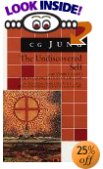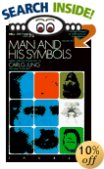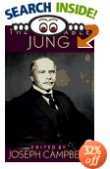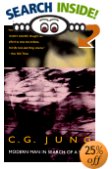

Carl Gustav Jung (July 26, 1875 – June 6, 1961) was a Swiss psychiatrist and founder of the neopsychoanalytic school of psychology. At university, he was a student of Krafft-Ebing. For a time, Jung was Freud's heir-apparent in the psychoanalytic school. After the publication of Jung's Symbols of Transformation (1912), Jung and Freud endured a painful parting of ways: Jung seemed to feel confined by what he believed was Freud's narrow, reductionistic, and rigid view of libido. Freud held that all libido was at base sexual, while Jung's psychological work continued to explore libido as multiple and often synthetic.
Jung was wary of founding a 'school' of psychology, and his co-workers recall many occasions on which he made statements along the lines of "thank God I am Jung and not a Jungian." This being the case, the term 'Jungian' is a bit of a misnomer. Jung himself preferred the term 'analytical psychology'.
Contemporary analytical psychology has diversified considerably in recent decades, establishing a range of methods and viewpoints, and exploring areas that were insufficiently studied by Jung himself (most notably child psychology).
After the break with Freud, Jung questioned how such divergent views as Freud's, Adler's and his own could develop out of Psychoanalysis. The result of his questionings was Psychological Types (volume 6 of the Collected Works), in which Jung outlines a framework within which psychological orientations can be identified. The now much misunderstood terms 'extravert' and 'introvert' derive from this work. In Jung's original usage, the extravert orientation finds meaning outside the self, in the surrounding world, whereas the introvert finds it within. Jung also identified four modes of experience, four functions: thought, feeling, sensation, and intuition. Broadly speaking, we tend to work from our most developed function, and we need to widen our personality by developing the others. In addition, the unconscious often tends to manifest through the inferior function, so that encounter with the unconscious and development of the inferior function(s) can tend to progress together.
The four functions may be extraverted or introverted.
This model has been amended by some subsequent analytical psychologists.
Central to analytical psychology is encounter with the unconscious. The result is greater adaptation to reality (both inner and outer), and more developed consciousness. We experience the unconscious through symbols, and an essential part of the process is to learn its language. Jung recalled how during his time with Freud he was looking one day at a notice in a foreign language, and he reflected on how the notice doesn't conceal its meaning, but simply requires us to learn how to read it. He considered that maybe Freud had attributed a concealing and distorting function to the unconscious when in fact what's required is to understand how the unconscious expresses itself.
Blocked or distorted development of the personality is characteristic of neurosis, and in psychosis consciousness is overwhelmed by the unconscious. The aim of psychotherapy in Jung's view is to develop a situation where consciousness is not swamped by the unconscious, but neither is it shut off from it. The encounter between consciousness and the symbols arising from the unconscious enriches life and promotes psychological development, individuation.
Jung's concept of the collective unconscious is often misunderstood as some kind of race memory, with the archetypal symbols being somehow transmitted, perhaps genetically. In fact, what Jung meant by the term is that we share a common psychological heritage, just as we share a common physical one. Symbols have a certain similarity and fall into similar patterns in different places and times, simply because all human minds are basically similar. Thus we can often understand the symbols arising from the unconscious by comparing them with similar processes occurring elsewhere. Jung said that it isn't a matter of inherited images, but rather of an inherited predisposition to experience certain images. Many of the commonly repeated criticisms of Jung's work seem to be based on a misunderstanding of this last point.
Jungian psychology was geared largely toward the nature of symbolism and the effects of attachment upon the ability of people to live their lives in ignorance of their deeper "symbolic" natures. His ideas center around the understanding that a symbol loses its symbolic power when it is "attached" to a static meaning. The attached, and therefore static meaning renders an amorphous symbol (like the sphere or the ourobouros) to a mere definition; no longer does it have the ability to be active in the mind as a "transformer of consciousness," free to associate with new experiences and thinking. "Symbolic power" transcends and permeates through all conscious thinking.
Source:http://en.wikipedia.org/wiki/Carl_Jung
|
As an example of Jung's belief in a spiritual solution, from page 264 of this book, Jung writes: Quoted From: AA Bibliography Reading List Excerpt of Modern Man in Search of a Soul, 1933. Published by Routledge & Kegan Paul, translated by Cary Baynes. Reproduced here, Chapter IX, The Basic Postulates of Analytical Psychology. IT was universally believed in the Middle Ages as well as in the Græco-Roman world that the soul is a substance. Indeed, mankind as a whole has held this belief from its earliest beginnings, and it was left for the second half of the nineteenth century to develop a “psychology without the soul”. [the German Seele = soul or psyche] Under the influence of scientific materialism, everything that could not be seen with the eyes or touched with the hands was held in doubt; such things were even laughed at because of their supposed affinity with metaphysics. Nothing was considered “scientific” or admitted to be true unless it could be perceived by the senses or traced back to physical causes. This radical change of view did not begin with philosophical materialism, for the way was being prepared long before. When the spiritual catastrophe of the Reformation put an end to the Gothic Age with its impetuous yearning for the heights, its geographical confinement, and its restricted view of the world, the vertical outlook of the European mind was forthwith intersected by the horizontal outlook of modern times. Consciousness ceased to grow upward, and grew instead in breadth of view, as well as in knowledge of the terrestrial globe. This was the period of the great voyages, and of the widening of man's ideas of the world by empirical discoveries. Belief in the substantiality of the spirit yielded more and more to the obtrusive conviction that material things alone have substance, till at last, after nearly four hundred years, the leading European thinkers and investigators came to regard the mind as wholly dependent on matter and material causation... |
 The Undiscovered Self by C. G. Jung
The Undiscovered Self by C. G. Jung
Together for the first time in one paperback volume are two of Jung's major late works, in the version published in The Collected Works of C. G. Jung, as rendered by Jung's official translator. "The Undiscovered Self" (1957) integrates many of Jung's lifelong social and psychological concerns and addresses the uneasy relation between the individual and mass society. The survival of civilization, he maintains, depends on individual awareness of both the conscious and unconscious aspects of the human psyche. The exploration of the unconscious, in particular, leads to self-knowledge and with it recognition of the duality of human natureits potential for evil as well as for good. Jung believes that it is this self-knowledge that enables the individual to resist the collective power of mass society and the state and to cope with their possible threats. Jung's reflections on self-knowledge and the exploration of the unconscious carry over into his essay "Symbols and the Interpretation of Dreams," completed shortly before his death in 1961. (It is the original version of his introduction to the symposium Man and His Symbols, conceived as a popular presentation of Jungian ideas.) Describing dreams as communications from the unconscious--as expressions of aspects of the individual that have been neglected or unrealized--Jung explains how the symbols that occur in dreams compensate for repressed emotions and intuitions. In a world dehumanized, in Jung's view, by scientific "progress" and the loss of emotional participation in natural events, symbols recall our original nature, its instincts and peculiar way of thinking. This essay brings together Jung's fully evolved thoughts on the analysis of dreams and the healing of the rift between consciousness and the unconscious, in the context of his system of psychology.

Psychology of the Unconscious: A Study of the Transformations and Symbolisms of the Libido by Carl Gustav Jung, Beatrice M. Hinkle
Breaking from Freud by allowing for nonsexual psychic forces driving the libido, Carl Jung made a more lasting name for himself than did his mentor. Psychology of the Unconscious is a prodigious leap away from Freud's dictatorial constraints, exploring the mythic aspects of our interior lives in exquisite detail. While he sometimes sacrifices readability for erudition, this is no failing for the interested student, who strives to follow Jung as he moves from Norse mythology to Shakespeare to Sanskrit etymology quickly but seamlessly. Focusing in particular on the vivid dream and fantasy life of "Miss Miller," he often uses her words as a kind of airstrip from which to take off on his own flights of imagination, always careful to stay focused on analysis and understanding and limited only by his exhaustive knowledge.
Having demonstrated to his own satisfaction that the libido (the energy of the unconscious) transcends sex, Jung sets about showing the reader how it is so. Never denying Freud's crucial insights into sexual history and fantasies, he goes beyond them to tell a story prefiguring mythicists like Joseph Campbell's. The libido becomes a hero, escaping from confinement, having multifarious adventures in the world, but always returning to the source of its power--the unconscious--in dreams and imagination. This powerful, elastic theory is still in use today, and Jung's Psychology of the Unconscious deservedly takes its place among those books that have most greatly influenced the way we think about ourselves. --Rob Lightner
Product Description:
"This book became a landmark, set up on the spot where two ways divided. Because of its imperfections and its incompleteness it laid down the program to be followed for the next few decades of my life." Thus wrote C. G. Jung about his most famous and influential work, the one that marked the beginning of his divergence from the psychoanalytic school of Freud. In this book Jung explores the fantasy system of Frank Miller, the young American woman whose account of her poetic and vivid mental images helped lead him to his redefinition of libido while encouraging his explorations in mythology. Published in 1912 as Wandlungen und Symbole der Libido, this is a key text for the study of the formation of Jung's ideas and for understanding his personal and psychological condition during this crucial time. Miller's fantasies, with their mythological implications, supported Jung's notion that libido is not primarily sexual energy, as Freud had described it, but rather psychic energy in general, which springs from the unconscious and appears in consciousness as symbols. Jung shows how libido organizes itself as a metaphorical "hero," who first battles for deliverance from the "mother," the symbol of the unconscious, in order to become conscious, then returns to the unconscious for renewal. Jung's analytical commentary on these fantasies is a complex study of symbolic parallels derived from mythology, religion, ethnology, art, literature, and psychiatry, and foreshadows his fundamental concept of the collective unconscious and its contents, the archetypes.

Man and His Symbols
by Carl Gustav Jung
From the Inside Flap
Illustrated throughout with revealing images, this is the first and only work in which the world-famous Swiss psychologist explains to the layperson his enormously influential theory of symbolism as revealed in dreams.

Portable Jung (Viking Portable Library)
by Carl Gustav Jung, Joseph Campbell, C. G. Jung
To discuss the problems connected with the stages of human development is an exacting task, for it means nothing less than unfolding a picture of psychic life in its entirety from the cradle to the grave.

Jung and the Lost Gospels : Insights into the Dead Sea Scrolls and the Nag Hammadi Library by Stephan A. Hoeller, June Singer
With a psychological perspective drawn from the work of C. G. Jung, this book provides an excellent introduction to Gnosticism and its relationship to the spiritual quest of our own age. Several key mythic motifs of Gnosticism are explored both in a religious and psychological context.

The Gnostic Jung and the Seven Sermons to the Dead
by Stephan A. Hoeller
Jungian psychology based on a little known treatise he authored in his earlier years.This widely acclaimed and influential book was the first to fully explore the Gnostic underpinnings of C. G. Jung's personal vision and psychology. It is "must reading" for anyone with interests in Jung, depth psychology, and Gnosticism.
